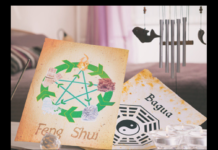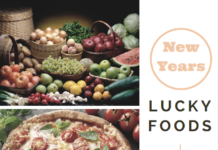Over the years we have shared a lot of content about New Years. There are plenty of New Year’s traditions and New Year’s superstitions that people follow around the world. Interestingly enough, many food dishes fall in both categories of being a traditional dish, while also following a superstition that what you eat, can determine your luck in the coming year. Certain foods, like noodles, pork, cabbage, & beans, symbolize good fortune in the new year. New Year’s lucky soups are popular because you can easily incorporate several lucky foods all into one dish.
Today our focus is on New Years lucky soups from around the world. Keep in mind that these are traditional lucky soups, but it doesn’t mean you can’t make your own favorite soup. Just incorporate some of the lucky food items such as beans, root vegetables, or greens. For a full list of foods, please visit our comprehensive blog New Year’s Lucky Foods.
New Years Lucky Soups
Black-Eyed Peas Soup & Greens
One of the longest traditions is that of eating black-eyed peas and collard greens on New Years Day. So how far back does the tradition go? According to a portion of the Talmud written around 500 A.D, it was a custom to eat black-eyed peas for the Jewish New Year, Rosh Hashanah. Here in the U.S., the tradition dates back to the Civil War. With food shortages, the Southern soldiers often had nothing else to eat during a cold winter other than peas & pork. The solder felt lucky to survive, which is why both foods are associated with lucky. Another Southern tradition states that black-eyed peas are a symbol of emancipation for previously enslaved African-Americans, who were officially freed on New Year’s Day after the Civil War.
Black-eyed peas are associated with humility. The beans also resemble coins & expand when you cook them, so they are said to symbolize expanding wealth. The collard greens are green like money and are said to ensure a financially prosperous new year.
Many people throw greens into the black-eyed peas towards the end of the cooking process, to bring additional luck and served with a side of cornbread. The color of the cornbread is considered to represent gold, and eating it is thought to bring you spending money in the prosperous new year.
Black Eyed Peas
Equipment
- Large pot
- small pan
- Cutting Board
- knife
Ingredients
- 4 slices bacon or 1 chorizo sausage diced (we prefer chorizo) Optional: we like to throw in left over ham bone from Christmas dinner or use ham hocks to deepen the flavor
- 1 large white onion chopped
- 1 red pepper chopped
- 2 small carrots chopped
- 2 stalks celery chopped small
- 4 cloves garlic minced
- 1 package dried black-eyed peas rinsed & pick out any broken beans (1 pound package)
- 3 1/2 cups water (you can also use chicken stock)
- 1 tsp salt
- 2-3 tsp cumin
- 2-3 tsp black pepper
- 3 bay leaves
Instructions
- Chop all the vegetables
- Cook bacon and or chorizo in a pan for several minutes until bacon crisps or sausage is browned.
- Remove from pan but use drippings to saute the onions, carrots, celery & green pepper. Cook 4 to 5 minutes until tender.
- Add beans, water and seasoning. Bring to boil.
- Cover and cook over medium heat for 1 1/2 hours to 2 until black-eyed peas are tender. Stir every 15 minutes and add additional water if needed.
Notes
Italian Lentil Soup
Eaten at midnight by Italian families in Italy to bring luck, is an Italian Lentil soup called enticchie di capodanno (lentils for the new year). You will also see the dish referred to as cotechino con lenticchie (lentils with cotechino sausage.) Families gather together to share their memories and blessings from the previous year, with hopeful optimism for the coming year.
Lentils are thought to resemble Roman coins, symbolizing money. The Italians feel that eating lentils bring good luck, fortune, and prosperity. They say the more lentils you eat, the richer you become and the better your wealth, fortune, and happiness for the new year. Sausage has fat and therefore also symbolizes a “fat wallet” in the coming year. Pigs also root forward, which represents progress in the New Year.
Cotechino sausage can usually only be found in an Italian specialty market. We have seen versions that use sage Italian sausage, & then others use a pork loin and slice it over the lentils. The point is to incorporate both the beans and the pork if possible. The key is to drizzle some olive oil at the top when serving. Olive oil was referred to as the “nectar of the gods” in ancient Rome. Olive oil was used as a fuel for lighting, as an ingredient of perfumes, in religious rituals, for massages, as a multi-purpose lubricant, and even prescribed as a medicine.
Cotechino con Lenticchie (Cotechino Sausage with Lentils)
Equipment
- medium pan
- Large pot
- Cutting Board
- knife
Ingredients
- 1 cotechino sausage (you can find this at an Italian market or used Jimmy Dean Sage Italian Sausage & add tsp of clove, nutmeg & garlic powder to get a similar flavor to the cotechino)
- 1 lb package of dry lentils soaked in water overnight
- 1 large white onion peeled and diced
- 2 carrots peeled and diced
- 2 celery stalks diced
- 6 cloves garlic peeled and diced
- 4 bay leaves
- 4 cups stock
- 3 tbl fresh h parsely fresh
- 1/2 tsp red chili pepper flakes or to taste
- 1/2 cup + 2 tbls extra virgin olive oil
- 1/2 tsp fresh sage minced (you can eliminate this if you are using the sage sausage)
- 1/2 tsp fresh thyme minced
- Fine Sea Salt to taste
- Freshly-ground black pepper, to taste
- 1 sprig fresh rosemary
Instructions
- Soak Beans overnight
- Peel and Dice the onions, carrots, garlic. Dice the CeleryMince the Sage and Thyme
- If you are using Jimmy Dean, brown your sausage over medium heat in a large pan and break up into crumbles. Set aside once browned.
- In the drippings along with 1 tbls olive oil, saute the onion, carrots, celery and cook for 5 minutes. Add sage, thyme, rosemary, and bay leaf, and sauté until fragrant, about 2 minutes.
- Add the lentils and pour in just enough water to cover them. Season with salt and pepper, to taste.
- Bring to a boil over high heat. Boil for 5 minutes and then reduce to a simmer.
- Boil for 5 minutes and then reduce to a simmer.
- Add the crumbled sausage.
- Cover, and allow the lentils to simmer very gently until they are tender and creamy, 35 to 45 minutes.
- Check occasionally, and add water in very small amounts if the lentils begin to stick before they are fully cooked.
Notes
Pozole Soup – Mexico
For the Aztecs, corn was a staple crop, and the corn goddess a revered giver of life. A traditional pre-Columbian soup or stew from Mexico, this is made from dried hominy, pork shoulder or shanks, red chiles, garlic & spices. These simmer for hours until the hominy pop and split, imparting rich flavors with a unique texture. There are three types of pozole that mirror the colors of the Mexican flag-red (Jalisco), white and green (Guerrero).
Tamales, corn dough stuffed with pork and wrapped in a corn husk or banana leaf are often served along with the pozole.
Soup Joumou – Haiti
Pronounced “joo moo” this soup has represented remembrance and independence in Haiti since 1804. The tradition of having this soup on New Year’s days is still around, representing hope for the future while commemorating the past…Haiti’s liberation from France. There are various recipes you can find online, but the primary ingredients are squash (calabaza and/or butternut are the main ones used,) onions, leeks, peppers, garlic, celery, malanaga, taro, yams, cabbage & pasta or rice. There are also plenty of fresh herbs used including parsley & thyme. For the meat, there is anything from the ham hock, beef, chicken and/or goat. In some versions, they use scotch bonnet peppers. It is very flavorful and filling.
Fish Stew – Nigeria
Like in many parts of the world, in Nigeria they feel it is bad luck to eat poultry on New Year’s to avoid ending up poor, scratching dirt like a chicken. Chickens also scratch backward and New years is about moving forward into the future. Fish swim forward, so in many parts of Nigeria, they opt for a fish stew often made with tilapia, tomatoes, peppers & spices.
Chinese New Year Lucky Soups
Ozoni – Japan
Ozoni is said to have originated from the samurai families in Japan. Ozoni is prepared differently around the country, but all include a base of mochi & dashi. Mochi is a glutinous rice cake & dashi is a traditional broth made from dried kelp & bonito fish flakes. Other ozoni ingredients might include a variety of vegetables, commonly with carrots and daikon radish, taro root, mustard greens, spinach, sweet potatoes, or seafood, but largely dependent upon the region of Japan, individual family tradition, and preference.
Why is Ozoni soup thought to bring luck? It’s all in the ingredients. “Mochi” is the noun form of the verb “motsu,” or “to have or possess” in Japanese. By eating lots of mochi, you express the hope to have a lot in the New Year. Mochi also represents longevity & strength because of its stretchy texture. Local vegetables represent a bountiful harvest. Fish represents moving forward. Some use herring roe which symbolizes fertility.
Korean Rice Cake Soup (Teeokguk)
Teeokguk is a deep broth made from a deep, beefy broth fortified with bones and tough cuts that eventually yield after long hours of simmering. The stock is then cooled & refrigerated overnight. Prior to serving they remove the fat that has accumulated at the top. The broth is served with cylindrical-shaped rice cakes that are sliced and seasoned with Korean soy sauce and topped with the white part of a hard-boiled egg, roasted seaweed, scallions & toasted sesame oil. The whiteness of the soup symbolizes a clean, fresh start to the new year, and the disc-shaped rice cakes look like coins, so they symbolize a wish for upcoming prosperity for anyone who eats them.
During Chinese New Year many will also have broth with long noodles or wontons. Long noodles symbolize long life. Wonton is lucky because the shape resembles silver ingot so they mean property in the New Year. Both are served in a variety of broths from salty, to spicy or even sour. We also have a post dedicated to Chinese New Years Lucky Foods.
Before planning your final menu, we have several posts that will help. From What NOT to eat on New Years Day, a New Year Lucky Foods shopping list.










